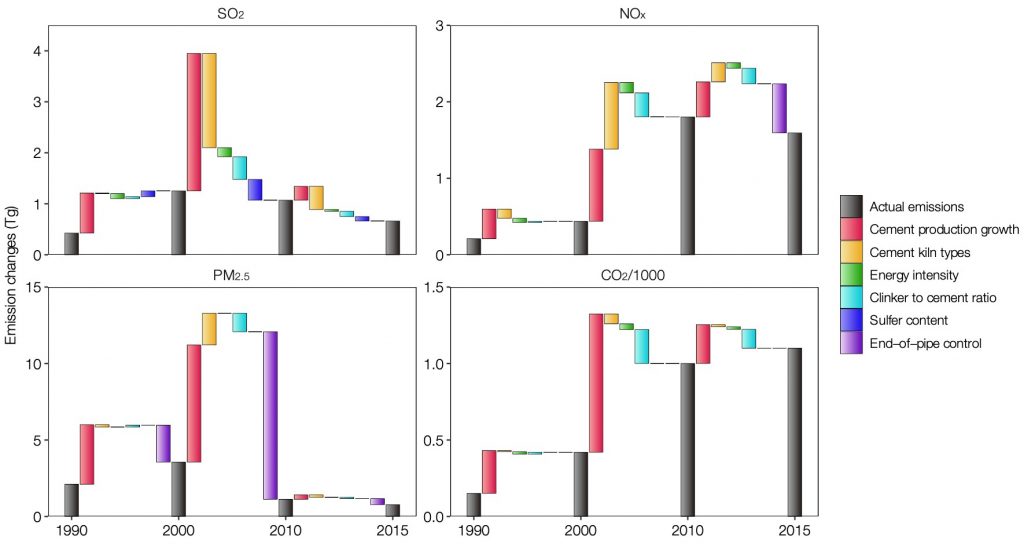2021-02-09 | Jun Liu, Dan Tong
The cement industry is an important basic industry for the national economic development. With the rapid development of industrialization and urbanization, China has become the largest cement producer and consumer in the world. At the same time, the cement industry is a typical high-energy intensity and high-polluting industry, which makes a substantial contribution to the emission of carbon dioxide and air pollutants in China. Under the ambitious goals of the carbon peak by 2030 and carbon neutrality by 2060, it is urgent to understand the current status of carbon dioxide and air pollutant emissions in the cement industry, which could help the low-carbon transformation and air pollution reduction synergies in China.
On 9 February 2021, the MEIC research team published one research paper in the well-known international journal Atmospheric Chemistry and Physics, which developed a high-resolution China’s Cement Emission Database (CCED) based on intensive kiln-based information of activity rates, production capacity, operation status, PM and NOx control technologies for over 3100 clinker production lines and over 4500 cement grinding stations. We estimated the emissions of carbon dioxide (CO2) and various air pollutants from China’s cement industry during 1990-2015, and investigated the decadal changes and driving forces of carbon dioxide and air pollutant emissions for the period of 1990-2015.

We found that, from 1990 to 2015, accompanied by a 10.3-fold increase in cement production, CO2, SO2, and NOx emissions from China’s cement industry increased by 627%, 56%, and 659%, whereas CO, PM2.5 and PM10 emissions decreased by 9%, 63%, and 59%, respectively. In the 1990s, driven by the rapid growth of cement production, CO2 and air pollutant emissions increased constantly. Then, the production technology innovation of replacing traditional shaft kilns by the new precalciner kilns equipped with high-efficiency control facilities in the 2000s markedly reduced SO2, CO and PM emissions from the cement industry. Since 2010, the growing trend of emissions has been further curbed by a combination of measures, including promoting large-scale precalciner production lines and phasing out small ones, upgrading emission standards, installing low-NOx burners and selective noncatalytic reduction to reduce NOx emissions, as well as adopting more advanced particulate matter control technologies. Our study highlights the effectiveness of advanced technologies on air pollutant emission control, however, CO2 emissions from China’s cement industry kept growing throughout the period, posing challenges to future carbon emission mitigation in China. It’s urgent to take actions to promote the rapid structural transformation and low-carbon developement of China’s cement industry.
The CCED database currently has been merged into the MEIC emission inventory, and provides the data underline the figures in the paper and the provincial emissions with unit capacity and age details. Welcome to download and use the CCED database through the new version of the MEIC website (http://meicmodel.org/dataset-cced.html).
Reference:
Liu, J., Tong, D., Zheng, Y., Cheng, J., Qin, X., Shi, Q., Yan, L., Lei, Y., and Zhang, Q.: Carbon and air pollutant emissions from China’s cement industry 1990–2015: trends, evolution of technologies, and drivers, Atmos. Chem. Phys., 21, 1627–1647, https://doi.org/10.5194/acp-21-1627-2021, 2021.
